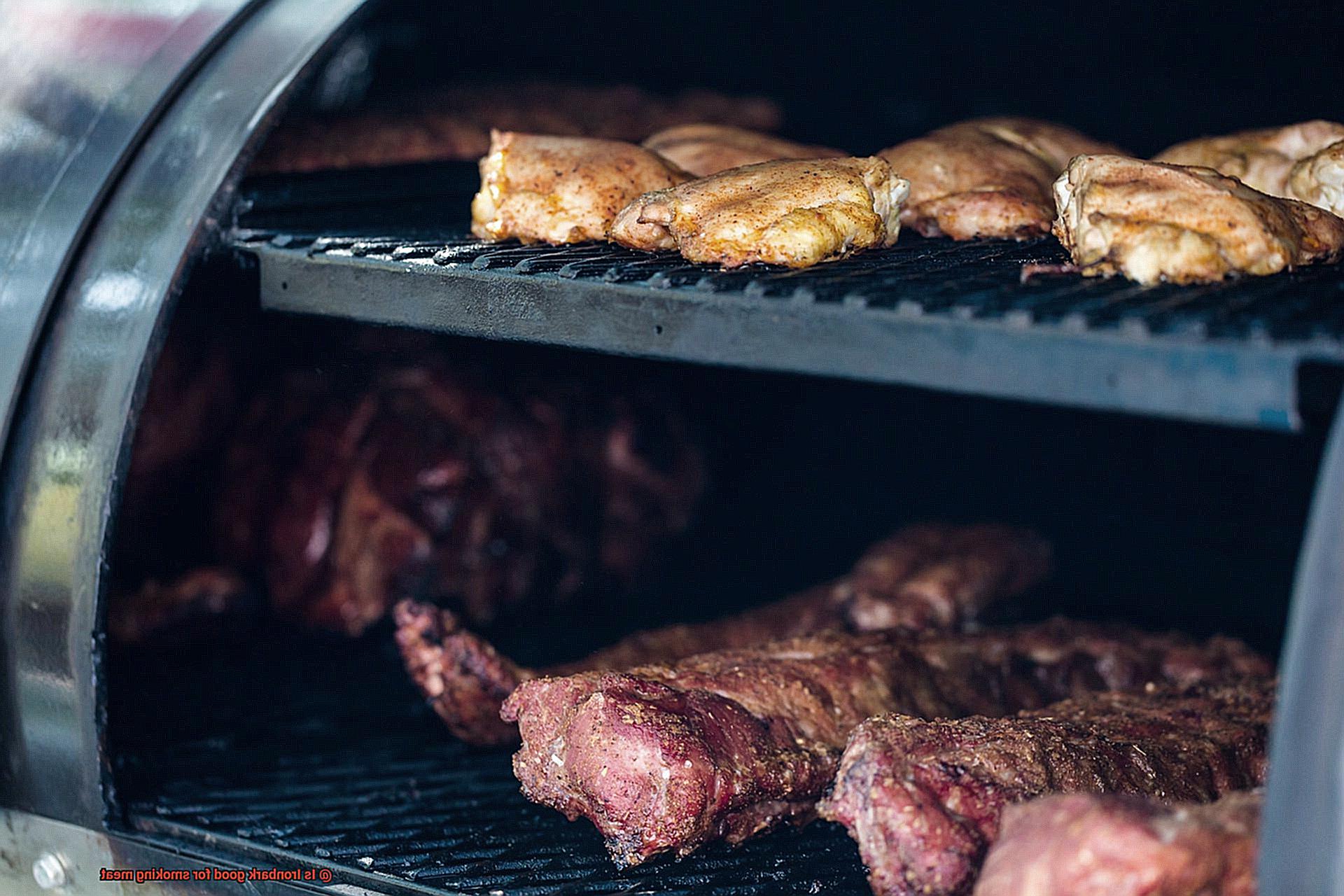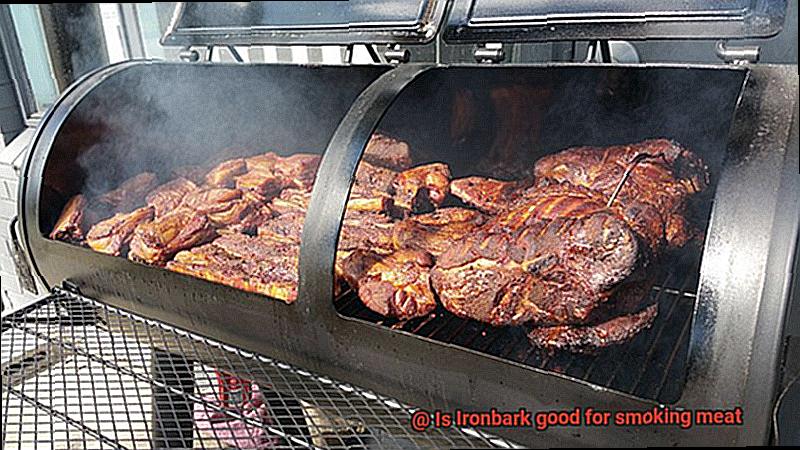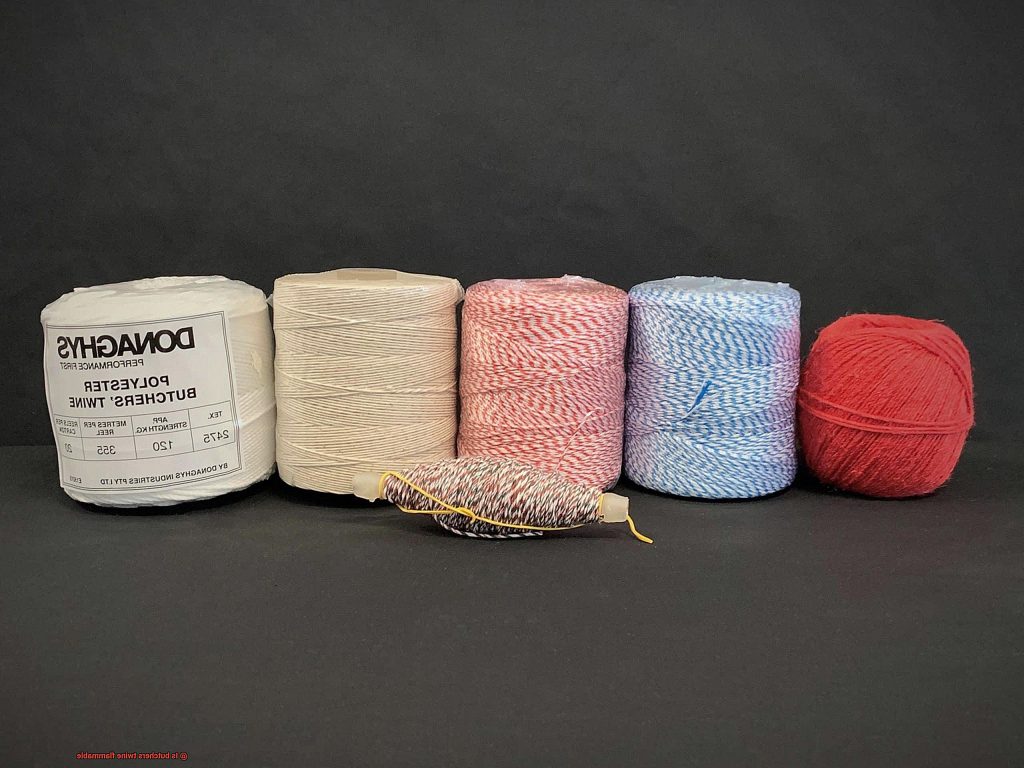Are you a meat lover who craves the smoky, mouth-watering taste of smoked meat? If so, you’re probably on the hunt for the best wood to infuse your meat with flavor. Look no further than Ironbark. This Australian native tree has been a go-to option for smoking meat, and it’s easy to see why.
Ironbark boasts a dense, heavy wood that burns slowly and steadily, making it perfect for smoking meat. Not only does it impart a unique flavor to your meats, but its long-lasting burn also ensures that you won’t have to constantly add more wood to keep your fire going.
But Ironbark isn’t just any old wood – it’s versatile enough to be used with different types of meat. Whether you’re smoking beef, pork, chicken or fish, Ironbark’s strong smoky flavor will enhance the natural flavors of your meat and create an irresistible taste.
What’s even better is that Ironbark is an environmentally-friendly choice. It’s sustainable and renewable, which means you can enjoy delicious smoked meats without harming the planet.
In this blog post, we’ll take a deep dive into the world of Ironbark and explore why it’s such an excellent choice for smoking meat. We’ll discuss its benefits and uses in detail, as well as provide tips on how to maximize its potential when smoking your favorite cuts of meat. By the end of this post, you’ll be an Ironbark expert with all the knowledge necessary to elevate your smoked meat game.
Contents
What is Ironbark?
Ironbark is a hardwood that is native to Australia and is renowned for its remarkable durability, strength, and resistance to rot and decay. Its dense and heavy composition boasts a unique reddish-brown color and a tight, interlocking grain pattern. The tree gets its name from its rugged, deeply furrowed bark, which serves as protection from environmental stresses like fire.
For centuries, Indigenous Australians have been using Ironbark wood for building tools, weapons, and shelter. Today, it remains highly valued for its use in construction, furniture making, and as a fuel source. Moreover, Ironbark is a popular choice among pitmasters for smoking meat due to its high heat output and long burn time. It releases natural oils as it burns, creating a distinctive smoky flavor that cannot be replicated by other types of wood.
What sets Ironbark apart from other woods is its slow-burning properties and even cooking temperature. It allows you to cook meat at low temperatures for an extended period without drying out or burning. Additionally, it produces less ash than other types of wood, making it easier to clean up after use.
But not all Ironbark is created equal. Quality can vary depending on factors like the age of the tree, location of growth, and harvesting techniques. Therefore, it is essential to source high-quality wood from reputable suppliers to get the best results.
Moreover, before using Ironbark for smoking meat, it must be properly seasoned and dried. Freshly cut Ironbark may contain too much moisture and can lead to uneven burning and a bitter taste. Experts recommend storing the wood in a dry place for at least six months before use.
Why is Ironbark Good for Smoking Meat?
There’s nothing quite like the rich, smoky flavor of perfectly smoked meat, and if you want to take your game to the next level, ironbark wood is the secret ingredient you need. As a hardwood native to Australia, ironbark stands out from other smoking woods due to its unique properties that make it an excellent choice for grilling enthusiasts everywhere.
One of the most significant benefits of using ironbark for smoking meat is its density and durability. Its high concentration of lignin, a complex organic polymer that gives the wood its strength and resistance to decay, allows it to burn hot and clean while producing a sweet and smoky flavor that pitmasters and grillers love. Additionally, its low moisture content makes it easy to ignite, reducing the risk of over-smoking the meat.
Ironbark also produces a consistent heat output, which is crucial for maintaining the ideal cooking temperature. Unlike other woods that can produce excessive smoke, ironbark burns clean and produces minimal smoke. This ensures that the meat absorbs the smoke flavor fully while reducing the risk of over-smoking.
Another reason why ironbark is a top choice for smoking meat is its availability. Many areas in Australia have abundant ironbark trees, making it a readily available and sustainable option for those who live in the region. However, even if you don’t live in Australia, ironbark is becoming more widely available outside of the country due to increasing demand.
To ensure that you get the best results when smoking meat with ironbark wood, it’s essential to source high-quality wood from reputable suppliers. You should also season and dry the wood properly before use to avoid uneven burning and bitter taste.
Benefits of Using Ironbark to Smoke Meat
Look no further than ironbark wood – the secret ingredient that provides numerous benefits when smoking meat.
Firstly, ironbark wood provides a unique smoky flavor that enhances the taste of your meat. The smoke produced by this hardwood is sweet and subtle, not overpowering like some other types of wood. This makes it perfect for smoking beef, pork, and chicken – allowing the natural taste of the meat to shine through.
Another benefit of using ironbark to smoke meat is its ability to burn consistently at high temperatures for extended periods. This means that you won’t have to worry about constantly monitoring the temperature or adding more wood to keep the heat going. Ironbark produces a consistent heat source that can last for hours without needing to refuel. This makes it ideal for smoking larger cuts of meat like brisket and ribs.
In addition to its consistent heat source, ironbark wood also burns cleanly, producing very little ash or soot. This ensures that the smoke produced is pure and doesn’t contain any harmful chemicals or impurities that could affect the flavor of your meat. You’ll get a clean and pure smoke that enhances the taste of your meat without any unwanted side effects.
Finally, ironbark wood is readily available and affordable compared to other types of smoking woods. You can find it in most hardware stores or online, so you won’t have to break the bank to get your hands on this amazing wood.
How to Properly Season and Dry Ironbark Wood
If you’re serious about smoking meat, you know that not all wood is created equal. Ironbark wood, with its dense and heavy nature, is a popular choice for barbecue enthusiasts around the world. But before you start smoking your meat, it’s crucial to properly season and dry your ironbark wood. Here are five steps to follow:
Choose the Right Ironbark Wood
The first step is to choose the right type of ironbark wood. Look for well-seasoned and dried wood that is free of mold and decay. You can also choose between different types of ironbark, such as red ironbark or grey ironbark, depending on your personal preference.
Prepare the Wood for Seasoning
Prepare your ironbark wood by using a sharp saw or axe to cut it into manageable pieces and remove any bark or debris that may be present. This will help the wood dry out more evenly.
Begin the Seasoning Process
Stack your ironbark wood in a well-ventilated area and cover it with a breathable material like burlap or old blankets. This will help prevent moisture from accumulating on the wood while still allowing air to circulate around it. Let the wood dry out slowly over a period of several months.
Check on the Wood Regularly
During the seasoning process, check on your wood regularly and remove any pieces that show signs of mold or decay. Properly seasoned and dried ironbark wood should be hard and lightweight with no signs of moisture or sap.
Dry the Wood Before Use
Once your ironbark wood has been properly seasoned, it’s time to dry it before use. Place the wood in a warm, dry area with good airflow for several weeks, turning it regularly to ensure even drying.

Different Types of Meats Suitable for Smoking with Ironbark
Ironbark wood is a unique and delicious choice that complements many different types of meat. Here are five meats that are perfect for smoking with Ironbark:

Beef
Brisket, the king of barbecue cuts, is the perfect candidate for smoking with Ironbark. The toughness of the meat benefits from the low-and-slow cooking process that smoking provides, resulting in tender and flavorful meat.
Pork
Pork shoulder or pork butt are both excellent choices for smoking with Ironbark. With its high fat content, pork stays moist throughout the cooking process and takes on the bold smoky flavor of Ironbark exceptionally well.
Chicken
If you’re looking for a lighter option, chicken can also be smoked with Ironbark. However, it’s important to use fattier cuts like thighs or wings to prevent the meat from drying out during the long smoking process.
Fish
Smoking fish with Ironbark can be tricky but rewarding. Fatty fish like salmon and trout hold up well during cooking and take on a rich smokiness that complements their natural flavors.
Game Meat
For an adventurous twist, try smoking venison or wild boar with Ironbark. These meats have a more robust flavor that pairs well with the bold smoky taste of the wood.
Tips on How to Use Ironbark for Smoking Meat
Its unique flavor profile, slow-burning properties, and dense smoke make it an ideal wood for low and slow cooking methods. However, using ironbark for smoking meat requires a careful approach to achieve the best results. Here are five tips on how to use ironbark for smoking meat:

Choose the Right Cut of Meat
Ironbark has a strong and robust flavor that can easily overpower delicate meats such as fish or poultry. Therefore, it is best to use it for more substantial meats such as beef, pork, or lamb. These meats can stand up to the bold flavors of ironbark, resulting in a well-balanced and delectable smoky taste.
Soak the Wood
Ironbark is a dense wood that burns slowly, producing a thick smoke. To control the intensity of the smoke, soak the wood in water for at least an hour before use. Soaking helps prevent the wood from burning too quickly and also adds moisture to the smoking process, which can help enhance the flavor of the meat.
Use Small Pieces
Due to its density, ironbark takes longer to ignite than other woods. It is recommended to use smaller pieces of wood to ensure even heat distribution and consistent smoke production. Smaller pieces of ironbark will catch fire more easily and produce a consistent amount of smoke.
Keep the Temperature Low and Slow
Ironbark produces a robust smoke flavor that can quickly overpower the meat if used incorrectly. Therefore, it is crucial to keep the temperature low and slow to allow the meat to absorb just enough smoke without getting too smoky. A consistent temperature will ensure that the meat is cooked evenly and absorbs the flavors and aromas of the ironbark wood.
Experiment with Different Woods
While ironbark has a unique flavor profile, using it alone can become monotonous. It is recommended to experiment with other woods such as hickory or oak to create more complex flavors. A combination of ironbark and other woods can help balance out the flavors and aromas produced by the ironbark, creating a more nuanced taste.
Common Mistakes When Using Ironbark to Smoke Meat
Smoking meat with ironbark is a delicious way to impart a rich and smoky flavor to your favorite cuts of meat. However, there are some common mistakes that can ruin your culinary masterpiece. As an expert in the field, I have identified the top mistakes to avoid when using ironbark to smoke meat.
The first mistake is not properly preparing the wood. Ironbark needs to be seasoned before use to ensure that it burns evenly and infuses the right flavor into the meat. This entails drying the wood out for several months or up to a year before use. Skimping on this crucial step can result in wet or green wood, which produces an overwhelming amount of smoke with a bitter taste.
Another mistake is using too much ironbark. While it’s essential to use enough wood to create smoke, overusing it can overpower the natural flavor of the meat. Furthermore, too much smoke can cause creosote buildup in your smoker, which makes cleaning difficult and ruins future batches of meat.
Maintaining proper temperature is vital when smoking meat with ironbark. The ideal temperature range for smoking meat is between 225-250 degrees Fahrenheit. Many people make the error of letting the temperature fluctuate too high or low, leading to dry or tough meat.
Lastly, not allowing enough time for the meat to smoke is another significant mistake. Smoking meat requires patience and time, and rushing the process results in undercooked or overcooked meat. It’s crucial to allow enough time for the smoke to penetrate the meat and create a rich and flavorful taste.
He-Nw5-LMrE” >
Conclusion
In conclusion, Ironbark reigns supreme as the ideal wood for smoking meat. Its dense and hefty composition ensures that it burns slowly and steadily, imparting a sweet and smoky flavor that enhances the natural taste of your meat. Not only does it produce less ash than other types of wood, but it also maintains an even cooking temperature, allowing you to cook your meat low and slow without drying it out or burning it.
Ironbark’s clean-burning properties guarantee that the smoke produced is pure and free from harmful chemicals or impurities that could negatively affect the flavor of your meat. To unlock the full potential of Ironbark when smoking your favorite cuts of meat, sourcing high-quality wood from reputable suppliers and properly seasoning and drying the wood before use is crucial.
Furthermore, experimenting with different woods can help balance out the flavors and aromas produced by ironbark, creating a more nuanced taste. With its sustainability, affordability, availability, unique smoky flavor, consistent heat output, and minimal ash production – Ironbark is undoubtedly the king of smoking woods.
However, mastering the art of smoking meat with Ironbark requires some expert tips such as avoiding common mistakes like using too much wood or not allowing enough time for the meat to smoke. By following these tips while utilizing Ironbark’s exceptional qualities – you can take your smoked meat game to new heights.






